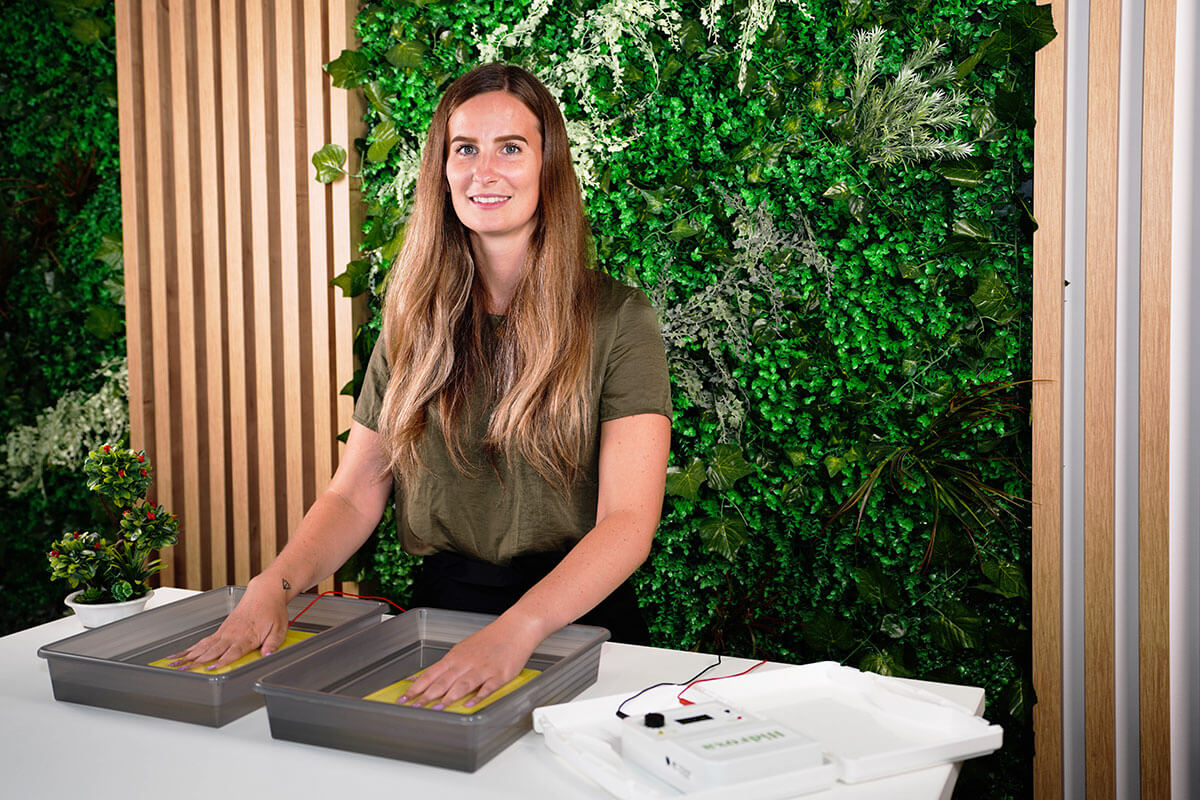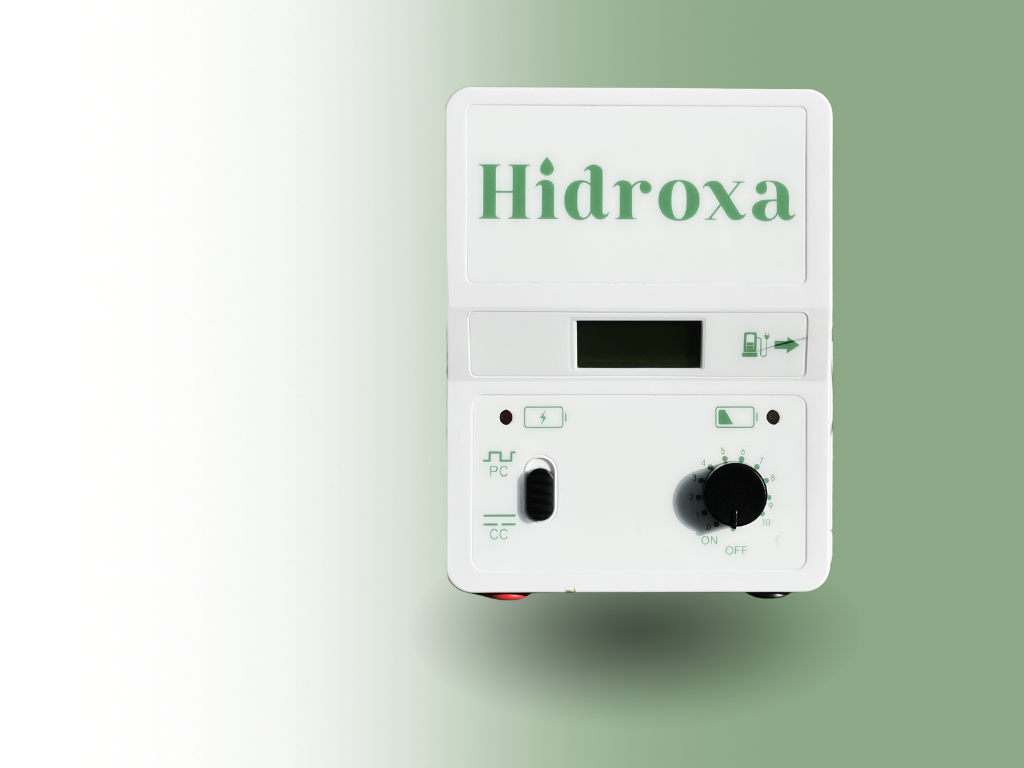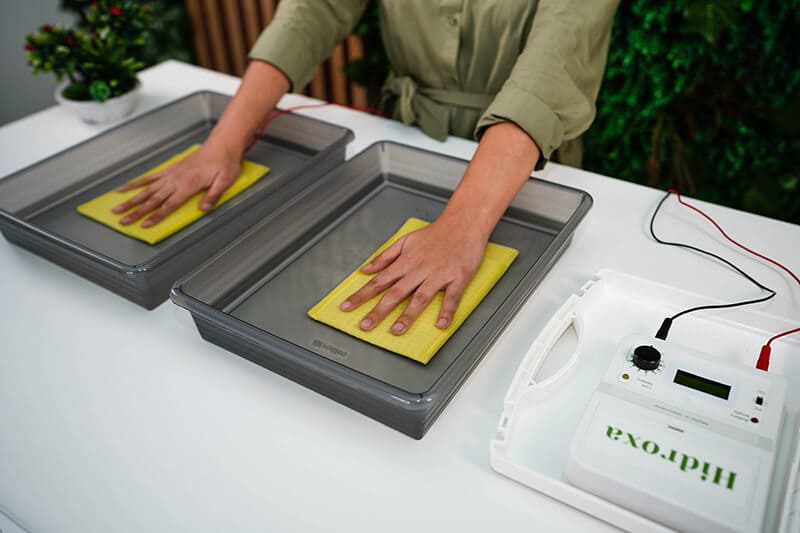Iontophoresis sweating solution: Your guide to treating hyperhidrosis
Imagine starting every day knowing that no matter the weather, the occasion, whether you're at a big event or just hanging out, you're dealing with the constant issue of sweating way too much. This is the reality for countless individuals living with hyperhidrosis, a condition characterized by abnormal, excessive sweating not necessarily related to heat or exercise. The impacts of this condition stretch far beyond physical discomfort, seeping into every aspect of daily life and often carrying a heavy emotional toll.
Take Sarah, for example, a vibrant young professional whose life, much like many others with hyperhidrosis, revolves around managing her condition. Mornings are a careful selection of outfits that won't reveal sweat stains. Her workday is a constant struggle with anxiety about handshakes during meetings or the ever-present worry about leaving damp marks on papers or her keyboard. Social events are a battlefield of self-consciousness, avoiding certain colors and fabrics that might betray her condition to the world.

For Sarah, and many like her, iontophoresis sweating treatment has emerged not just as a medical procedure, but as a beacon of hope. It’s not simply about reducing sweat; it’s about regaining control over her daily life, about not having to plan her day around her hyperhidrosis.
This story is not unique. Daily life with hyperhidrosis is fraught with such challenges, but the journey towards managing this condition is filled with hope. Iontophoresis, a treatment method that uses mild electrical currents to reduce sweating, has been a game-changer for many. It offers a way to navigate the world without the constant worry and embarrassment caused by constant sweating.
In this article, we delve into the world of iontophoresis and how it’s transforming the lives of those with hyperhidrosis. From understanding the condition and its impacts to exploring the relief and freedom offered by iontophoresis, we aim to provide a comprehensive view of this life-altering treatment.
Iontophoresis: Understanding its role and impact
As we delve into the world of iontophoresis, it's essential to address the most common queries surrounding this treatment, not just about how it works, but also its safety, frequency, and effectiveness.
The functioning of iontophoresis
Iontophoresis is a treatment that stands out for its simplicity and efficacy in managing excessive sweating, particularly in areas like the hands, feet, and underarms.The process involves a mild electrical current passed through water, temporarily reducing the activity of the sweat glands. The way this method functions is still unknown but it has been thought that it causes a temporary mechanical block of the ducts or the sweat glands or that it affects the nerve cells connected with the sweat glands.
Safety
Concerns about safety are paramount when considering any medical treatment. Iontophoresis is generally very safe, with minimal side effects such as mild skin irritation.
Treatment frequency
The treatment usually starts with frequent sessions, about three to four times a week. Once you start seeing a decrease in sweating, the frequency can be adjusted to a maintenance schedule, tailored to your needs.
Home treatment possibilities
One of the most appealing aspects of iontophoresis is the availability of home devices, making this treatment accessible and convenient. These devices allow you to integrate the treatment seamlessly into your routine, providing privacy and control over your hyperhidrosis management.
Expected results
While iontophoresis is not a cure for hyperhidrosis, it offers a path to better manage it. The results can vary among individuals, but many report a noticeable reduction in sweating after consistent treatment over a few weeks. This reduction in sweating can be a game-changer in daily life, bringing back confidence and comfort that excessive sweating may have eroded.
Through understanding these key aspects of iontophoresis treatment, individuals can gain insight into how this method might fit into their lives, offering hope and a practical solution for those battling with the daily challenges of hyperhidrosis. This treatment is more than just a medical procedure; it's a step towards normalizing daily activities and reclaiming a sense of normalcy often disrupted by excessive sweating.
Anti sweat machine
Our Hidroxa SE 20 iontophoresis machine is easy to use and clinically tested for treating excessive sweating of palms, feet, face, and armpits.
Iontophoresis is a scientifically proven method that works for approximately 95% of our customers. You can reach its full effect with 12 treatments.

The iontophoresis treatment process
Embarking on the journey of iontophoresis sweating treatment begins with preparation. It's good to consult a healthcare professional to determine your suitability for the procedure but iontophoresis doesn't need a doctor's ordination to be used. At least not in Europe. Before the session, ensure the target areas (like palms, soles, or underarms) are clean and free from any products like lotions or antiperspirants. Small cuts or abrasions should be covered with petroleum jelly to prevent irritation during the treatment.
The actual iontophoresis process is quite straightforward:
- Setting up the treatment: The treatment involves using a device with two shallow trays filled with water, into which your hands, feet, or both are placed. For underarm treatment, special pads soaked in water are used.
- Application of current: Once you're comfortably positioned, a mild electrical current is passed through the water. The sensation might feel a little unusual at first – a gentle tingling or pricking sensation – but it's generally well-tolerated.
- Duration: Each session typically lasts between 20 to 30 minutes. The exact duration can vary based on the individual's condition and the severity of their sweating.
- Frequency of sessions: Initially, treatments are usually more frequent, often three to four times a week. Once the desired level of dryness is achieved, the frequency can be reduced to once a week or even less, based on the maintenance needs.
Aftercare and maintenance
Post-treatment care in iontophoresis therapy is minimal, making it a convenient option for many. Right after the session, you can resume most daily activities. The treated areas might feel a bit dry; a fragrance-free moisturizer can help if needed. It's important to adhere to the treatment schedule recommended by your healthcare provider to maintain the results. Regular maintenance sessions are crucial in keeping the symptoms of hyperhidrosis at bay.
Understanding the process and commitment required for iontophoresis can help set realistic expectations. This treatment isn't a permanent cure for hyperhidrosis but offers a viable and effective method to manage excessive sweating. Regular maintenance sessions will become a part of your routine, much like any other skincare or health regimen, helping you live a more comfortable and confident life.
Customizing your iontophoresis sessions for maximum benefit
To get the most out of your iontophoresis sessions, personalizing the treatment is key:
- Adjusting water mineral content: If you're using tap water and not getting desired results, try adding a pinch of baking soda to enhance water conductivity. This can be particularly helpful in areas with soft water.
- Session length and frequency: Start with the standard 20-40 minute sessions, 3-4 times a week. Depending on how your body responds, you can adjust the duration and frequency. Some might require longer sessions, while others may do well with shorter, more frequent treatments.
- Gradual current increase: Begin with a lower current strength and gradually increase it over sessions. This helps your body acclimate to the treatment and can reduce the risk of skin irritation.
- Skin care post-treatment: Apply a gentle, fragrance-free moisturizer post-session if you experience dryness or skin irritation.

Troubleshooting iontophoresis: Common issues and solutions
Despite its effectiveness, iontophoresis users may encounter some challenges. If you experience irritation, reduce the current strength or session duration. Applying petroleum jelly to sensitive areas before treatment can also help.
For those not seeing the desired reduction in sweating, ensure the water mineral content is appropriate for your area. Also, consistency is crucial – make sure you’re adhering to the recommended frequency.
You should also regularly clean your device according to the manufacturer’s instructions. Poor maintenance can lead to reduced efficacy and longevity of the equipment.
Last but not least, experiment with water temperature or try utilizing pulsed current if available to enhance comfort during treatment sessions.
Iontophoresis compared: Evaluating alternatives in hyperhidrosis management
When considering treatments for hyperhidrosis, it's important to weigh iontophoresis against other available options. Each method comes with its own set of advantages and limitations.
- Antiperspirants (topical treatments): These are often the first line of defense. Clinical-strength antiperspirants containing aluminum chloride can be effective for mild hyperhidrosis. They are easy to use but may cause skin irritation and are less effective for severe cases.
- Medications (oral treatments): Oral medications, like anticholinergics, can reduce sweating but may have systemic side effects, including dry mouth, blurred vision, and bladder problems. They're suitable for generalized hyperhidrosis but require careful monitoring.
- B. toxin injections: Effective for underarm sweating as well as other areas, Botox injections can significantly reduce sweating for several months. However, they can be painful, expensive, and require repeated sessions.
- Surgery: Surgical options, like sympathectomy, are more invasive and typically considered when all other treatments fail. They offer permanent solutions but come with risks of compensatory sweating in other body areas and other even more sevre side effects.
- Iontophoresis: This stands out for being non-invasive and localized with minimal side effects. It's particularly effective for palmoplantar hyperhidrosis (hands and feet). The downside is the need for ongoing, regular treatment sessions.
In summary, iontophoresis is an excellent option for those seeking a non-invasive, low-risk treatment, especially when topical treatments are insufficient, and systemic or surgical options seem too extreme.
Frequently asked questions about iontophoresis for sweating
Iontophoresis is a non-invasive treatment that uses a mild electrical current to reduce excessive sweating, particularly in the hands, feet, and underarms. It temporarily disables sweat glands in the treated area, leading to reduced perspiration.
Most people experience only a mild tingling sensation during iontophoresis sessions. The process is generally well-tolerated, and the intensity of the electrical current can be adjusted for comfort.
Results can vary, but many individuals notice a reduction in sweating after 1-2 weeks of regular treatment. Consistency is key for the best outcomes.
Iontophoresis is an effective management tool but not a permanent cure for hyperhidrosis. Regular maintenance sessions are typically needed to keep excessive sweating at bay.
Side effects are generally minimal but can include dryness or mild irritation of the treated skin. Using a moisturizer can help alleviate dryness.
Yes, there are home iontophoresis devices available. It's important to follow the guidelines provided and consult with a healthcare professional for the best approach.
Initially, treatments are usually frequent, about 3-4 times a week. Once the desired level of dryness is achieved, the frequency can be reduced to once a week or less for maintenance.
Iontophoresis is suitable for most people with hyperhidrosis, particularly for those with excessive sweating in the hands, feet, and underarms. However, it's not recommended for pregnant women or individuals with certain medical conditions. Consultation with a healthcare provider is essential.
Iontophoresis is a preferred option for many because of its non-invasive nature, fewer side effects, and the convenience of home treatment. It's often more cost-effective and less risky than surgical options.
Yes, iontophoresis can be used in children, but it should be under the supervision of a healthcare professional and with adjusted settings suitable for their age and size. According to the British Association of dermatologists the lower age limit for iontophoresis is 5 years and most children tolerate it well.
Summary
Let's talk honestly about iontophoresis as a treatment for sweating: It offers a simple solution for those tough situations caused by excessive sweating. We acknowledge how hyperhidrosis can disrupt your daily routine, and we're committed to assisting you in finding relief.
Interested in iontophoresis? Ready to learn more? We're here to help. Reach out for all the information you need and to explore home treatment options.
Don't let sweating hold you back. Contact us now and begin your journey to a more comfortable you.